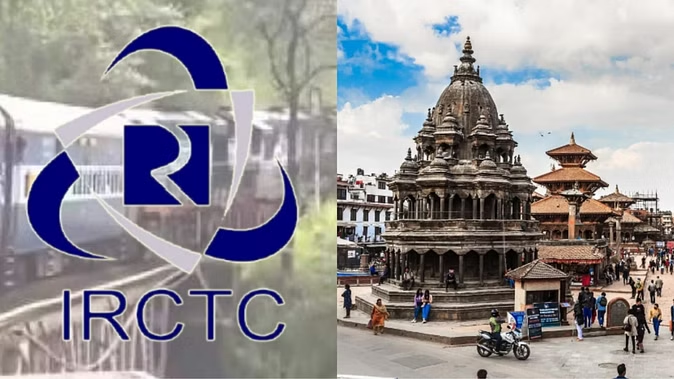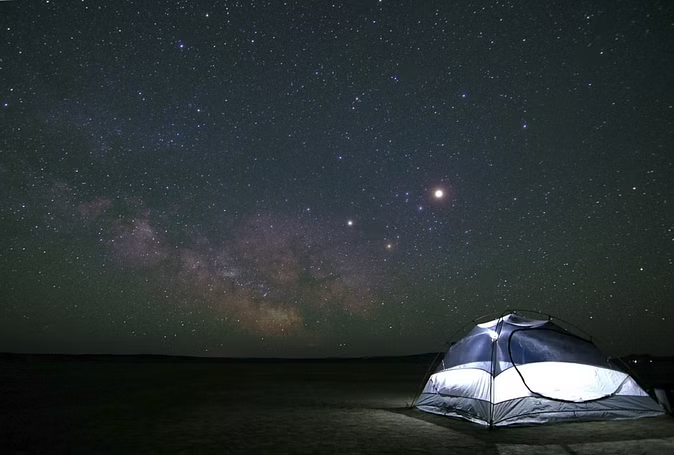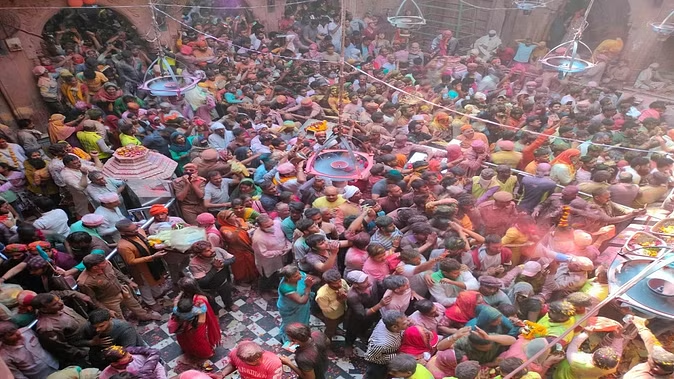Jhumri Talaiya, located in the Koderma district of Jharkhand, is a small town but very famous. It is also known as 'Jhumri Talaiya'. Jhumri Talaiya, located about 6 km from Koderma district headquarters, has a population of around 90,000. The residents of this city speak the 'Khortha' language.

Jhumri Talaiya, a small town in the 90s, has become a developed city today. Today there are about 2 dozen schools, colleges, post offices, banks, ATMs, and basic facilities like hospitals in this city. One of these is 'Talaiya Sainik School'. It is the most developed city in the Koderma district. The story of Jhumri Talaiya being a city from a small town named Jhumri is also interesting.
How did the name 'Jhumri Talaiya' come about?
Earlier the name of this city used to be only 'Jhumri'. In the year 1953, 'Talaiya Dam' was built in this town to prevent the devastating floods that occur every year in the Damodar River. Due to this dam, the word 'Talaiya' has been associated with its name and it came to be known as 'Jhumri Talaiya'. 'Jhumri Talaiya' being a naturally very green area, it is also known as a major picnic spot.
Became famous due to radio, a shadow in the cine world
Jhumri Talaiya is often mistaken for a fictional place, but the main reason for its fame is the presence of mica mines here and a large number of radio-loving listeners. Radio-loving listeners of Jhumri Tilaiya are known for writing a maximum number of letters in the Farmayishi programs of Vividh Bharti. Originally Jhumri Tilaiya was a mining town, which became famous in 1957 due to its association with Vividh Bharti. While many TV channels and FM radio stations had not yet started in India, Vividh Bharati's programs became national events. A large number of requests used to come from Jhumri Tilaiya in Vividh Bharati's programs. The young listeners of this town used to have a competition among themselves as to who gave the most requests in a day or month. The listeners, Rameshwar Barnwal and Nandlal Sinha were successful in getting their names called in this program almost daily. In this way, the listeners of Vividh Bharti got acquainted with Jhumri Tilaiya town.
Today times have changed, and people have forgotten Jhumri Talaiya. Jhumri Talaiya is not only famous for radio listeners, but this town was also once famous for its mica mines. In 1890, during the laying of railway tracks around Koderma, mica mines were discovered here, only after that many mining industries came into existence here. Most mica was exported to the USSR, which was used there in space and military equipment. Jhumri Talaiya / Jhumri Tilaiya, located in Koderma city of Jharkhand, is famous for not one but many wonderful places. This village full of dense forest, high mountains and mineral wealth is present in the Dhwajadhari mountain. The hill is dedicated to Lord Shiva and worship is held here on every Mahashiv Ratri. There is also a place named Chanchal Dham in this district situated near Barsoti river where the famous Maa Chanchalani Devi is worshipped. One who sees this place, which once sees the natural beauty unknown to the eyes of tourists, has the desire to see Jhumri Tailaya again and again.
Meaning of name
Some people used to doubt the existence of Jhumri Tilaiya and thought that it was a fictional town. The name has also been used in a humorous tone to show insignificance. For example, the 'Medical Journal of Jhumri Tilaiya' is often used to denote a cheap and unimportant medical journal. In a way, Jhumri Tilaiya is the Indian equivalent of Timbuktu, which is also believed to be a fictional place. It is mentioned in many Hindi films. Often when the people of Jhumri Tilaiya go for an interview, people express their surprise and happiness that the town written in their resume is really on this earth. Jhumri is a village in Jharkhand, while the word Tilaiya comes from the Hindi word tal which means pond. It is also said that Jhumri is also a local folk dance. Some also believe that it is derived from jhuri which is the local word for brush, which is used as cooking fuel in the village. Another theory is that Jhumri Talaiya got its name from its location between two separate villages Jhumri and Tilaiya Dam.
Tilaiya Dam
Tilaiya Dam is the first dam and hydroelectric station built by the Damodar Valley Corporation. This dam also has historical importance that it is the first dam built in post-independent India and it was inaugurated by the then-Indian Prime Minister Jawaharlal Nehru. This dam is 1200 feet long and 99 feet high. The Tilaiya Reservoir is spread over 36 square kilometers. There are many educational institutions around Tilaiya, the most famous of which is Sainik School (Army School), Tilaiya. The whole area is surrounded by lush green trees. It is also an ideal place for a picnic. The main purpose of this dam was to prevent floods. The capacity of the hydroelectric station here is 4 MW. Tourist Places Around Jhumri Talaiya Rajgir, Nalanda and Hazaribagh National Park, Sonbhandar Caves (rumored to contain Mauryan Treasure), Sammed Shikhar Jain Shrine, Dhwajdhari Hill, Satgwan Petro Falls, Saint Paramhans Baba's Samadhi, Makmaro Hills and Mother Chanchala Devi is Shaktipeeth.

The most popular place to visit in Jhumri Talaiya is the Tilaiya Dam. Most of the tourists reach to see this dam which is about 1200 feet long and about 99 feet high. It is said that the beauty of this place is at its peak during monsoon. People also like the beauty around this dam. In such a situation, you can first go to visit Tilaiya Dam.
Koderma Reserve Forest
After visiting Talaiya Dam, you can go to visit Koderma Reserve Forest. Greenery all around and high mountains are the identity of this place. In this forest, you can see many animals like bears, peacocks, wild boars, quails, wild dogs, etc. However, to roam in this forest, you have to take permission from the forest officer, only then you can go here for a walk.
Maa Chanchala Devi Temple
Let us tell you that Jhumri Talaiya is a tribal village and the people here believe a lot in faith. The temple of Maa Chanchala Devi present in Jhumri Talaiya is a very sacred place for the people here. This temple is considered to be the form of Durga Maa. The place is also popular among tourists for being situated on a hill. In such a situation, if you are planning to visit any holy place in Jhumri Talaiya, then you can go here.
Other beautiful places to visit
In Jhumri Talaiya, you can visit not only Talaiya Dam, Koderma Reserve Forest, or Maa Chanchala Devi Temple but also many other wonderful places to visit. Petro Falls, Ghodsimar Dham, Dhwajdhari Pahad, and Hills present in Jhumri Talaiya can also be visited for sightseeing.
Industries
In recent years Tilaiya had become an incubator for small-scale industries because of easy access to minerals, better highway and rail connectivity, and better power infrastructure because of the DVC substation. It has Rida industrial area which has a hand pump and mica powder manufacturing unit. Tilaiya has many sponge iron plants and mica units. Two mega power plants are also coming up. One is a 1000 MW Banjedih power plant and one is ADAG's 4000 MW power plant. In the banking sector, there are many national and private banks available including State Bank of India, Union Bank of India, Bank of Baroda, Bank of India, United Bank of India, Allahabad Bank, ICICI Bank, HDFC Bank etc.
There are many hotels and restaurants in this city. Center Square Hotel is located in the heart of the city, near Jhanda Chowk. Recently the city has seen a new web service entrant in the form of WebVox, showing concern over the growth of emerging from such service providers.
Population
Hindi is the main language of this town. Apart from this, Punjabi, Bengali, Marwari, Magahi, and English are also spoken here. As of the 2011 India census, Jhumri Talaiya had a population of 87867. Of these, 53 percent are men and 47 percent are women. It has an average literacy of 62 percent, higher than the national average of 59.5 percent: male literacy is 72 percent, and female literacy is 52 percent.

How to reach
It is very easy to reach Jhumri Talaiya. You can easily reach here from the cities of Ranchi, Dhanbad, Giridih, etc. of Jharkhand. Buses ply from these cities to Jhumri Taliya. Let us tell you that the nearest railway station is Koderma. If you want to travel by air After reaching Anchi airport, you can book a taxi or cab to reach here.
(PC: Lifeberrys)










